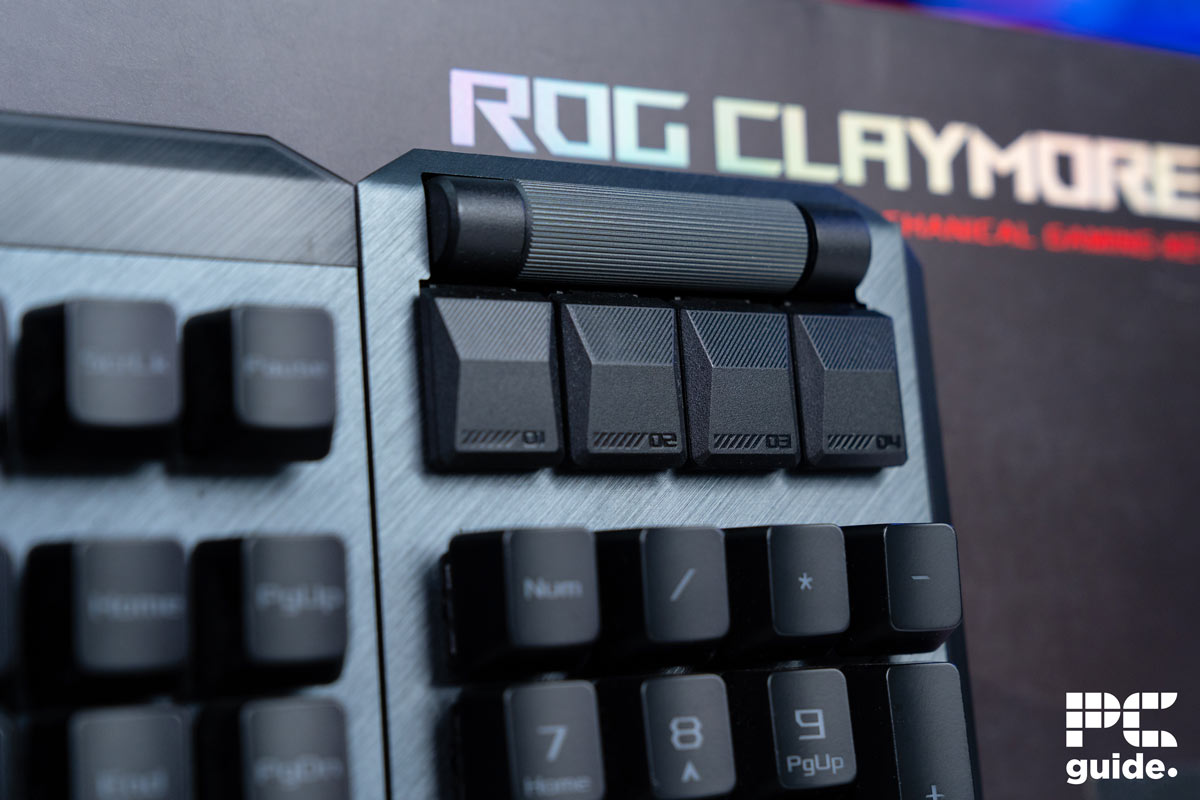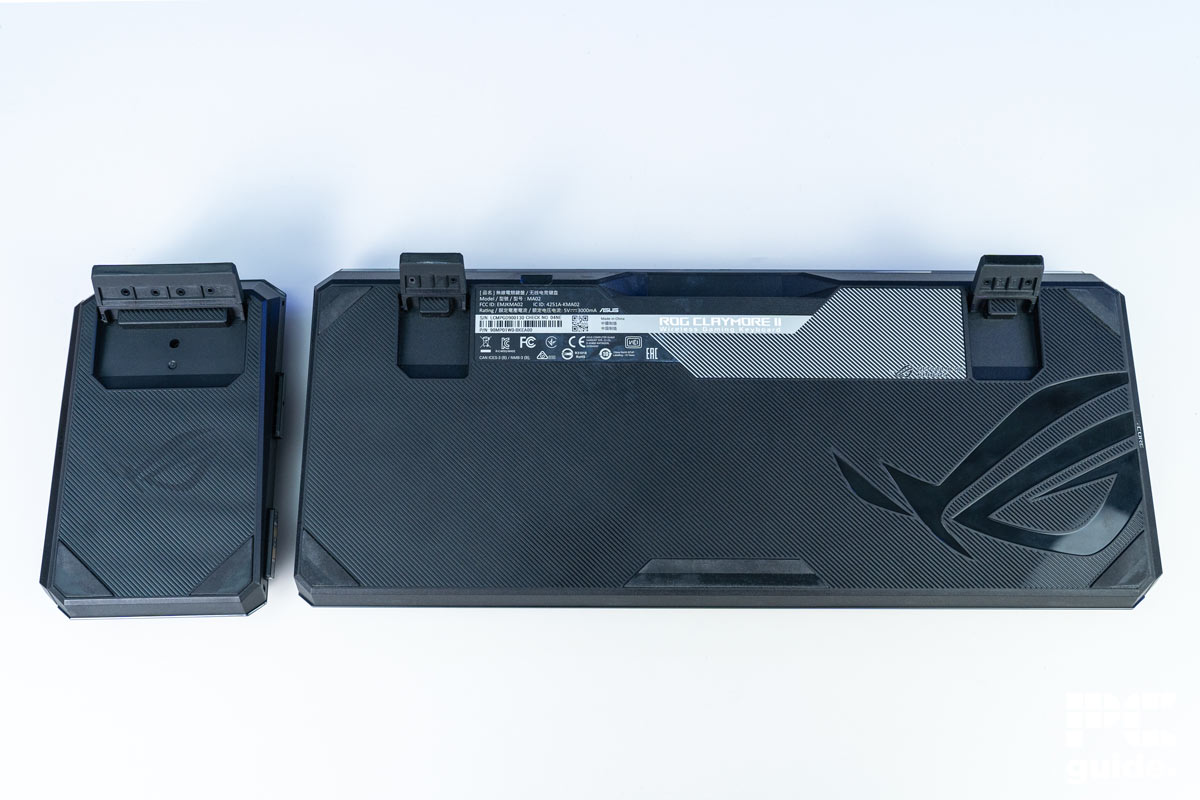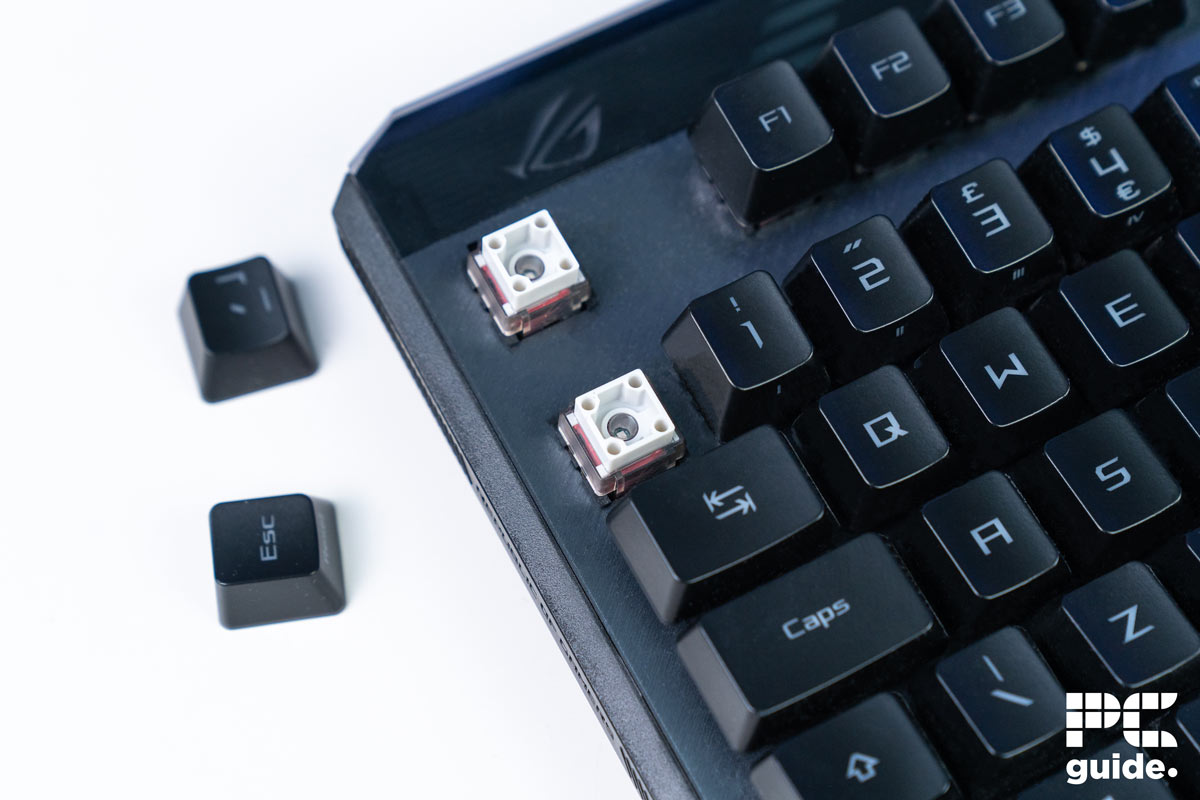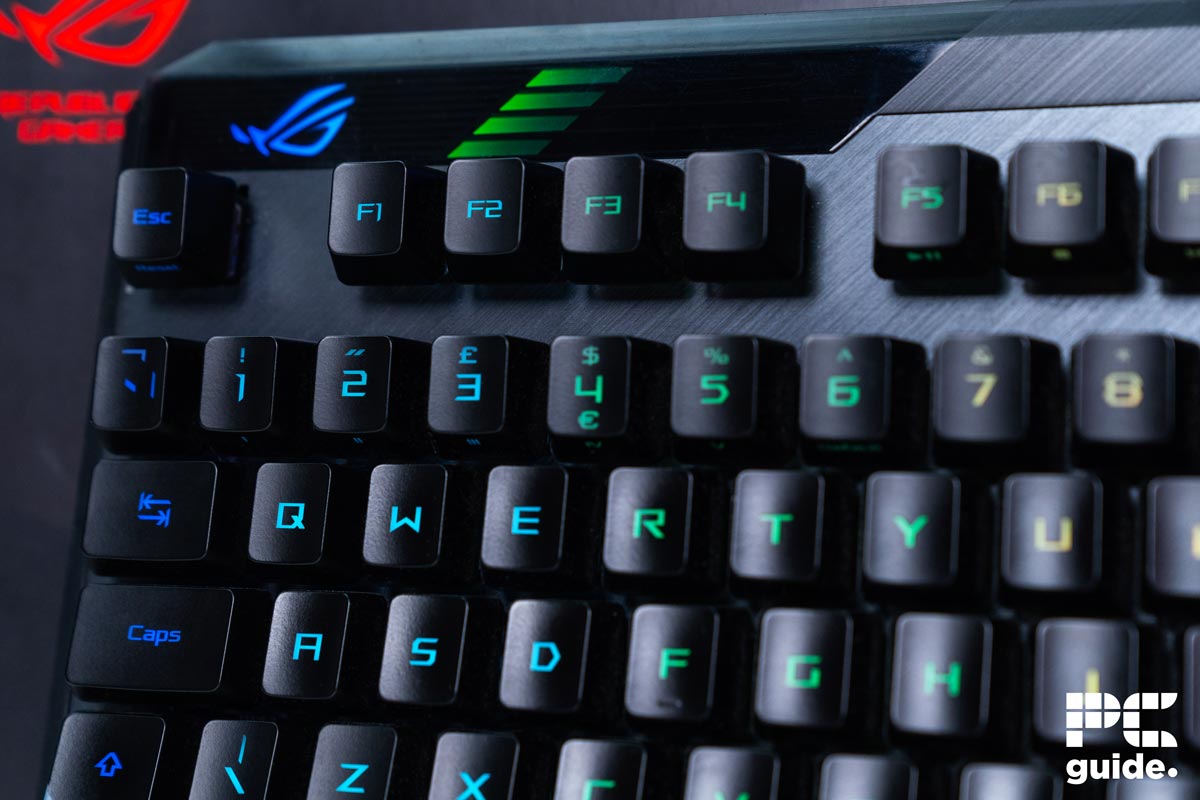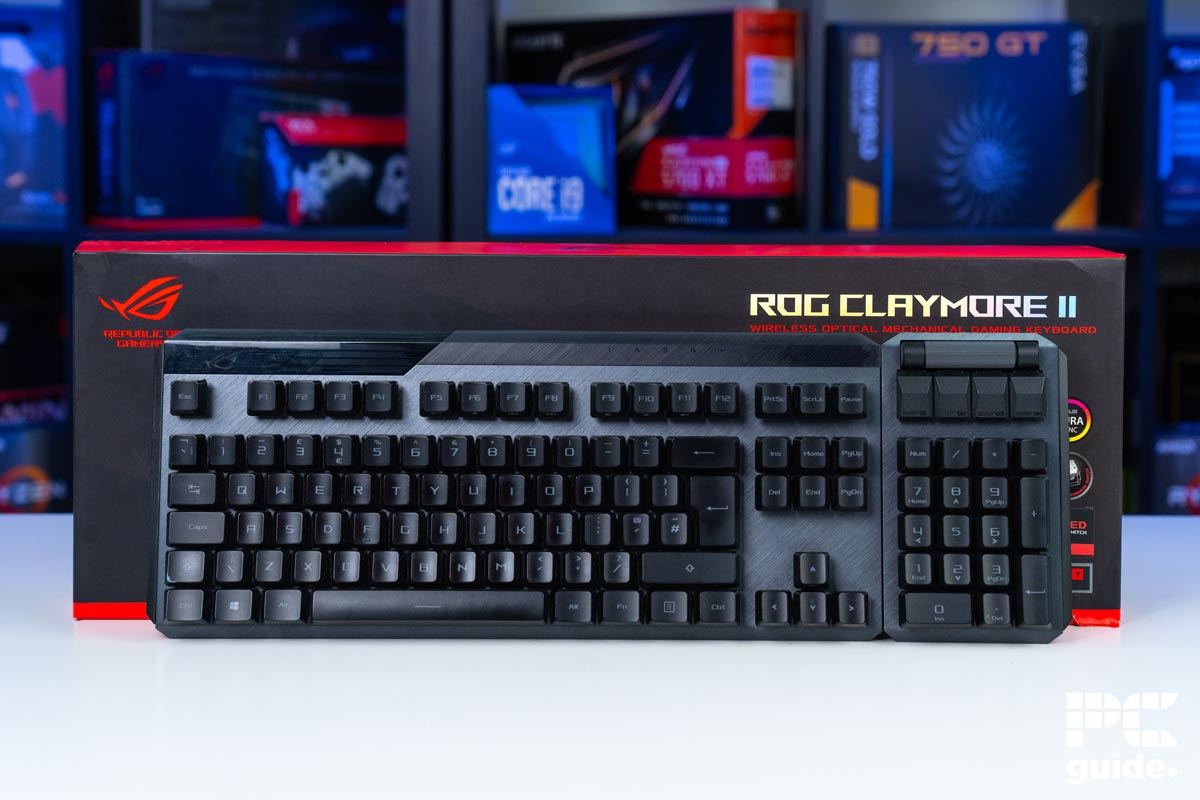ASUS ROG Claymore II review – a top-tier keyboard with plenty of customizability

Table of Contents
ASUS is often a go-to for anyone looking for high-quality peripherals, and its keyboards are well-known for packing a punch. Its ROG line is where to go for anything super high-end, and the keyboards in this tier tend to have a pretty hefty price tag to match.
I got a chance to try out the AUS ROG Claymore II, one of its more premium boards to see if it warranted the enthusiast pricing. Here’s how I got on, and whether it’s a worthy addition to your arsenal.

- Form factor: 100%/TKL 80%
- Key switches: RX Red and RX Blue switches
- Keycaps: PBT keycap
- Connectivity: Wired and 2.4GHz
- Dimensions: 462x155x39 mm
- Weight: ~1156g
Overall, the Claymore II is an excellent and feature-rich keyboard, with top-tier build quality. Its modularity and wireless technology provide a unique experience with extensive software customization, and while thick and heavy buttons can take away from its typing speed, it’s a standout keyboard that’s well worth the price tag.
- Includes a detachable wrist rest and numpad
- Great RGB customizability
- Reprogrammable buttons, including four macros
- Premium build quality and design
- Very expensive
- No Bluetooth support
- Numpad is rather flimsy when installed
- Rather heavy actuation feel
Design and features
The Claymore II is a pretty impressive piece of kit. It is a full-size keyboard, but it is separated into parts, and there is a convenient way to remove the numpad altogether. This is an excellent solution for those who may want some extra space for moving their mouse, but don’t want to sacrifice the ability to input numbers with ease either. In short – if you switch from gaming to working on spreadsheets, this a real winner.
It's also an option for providing some comfort to your typing experience, as it comes with a full-size wrist rest – a magnetic one, no less – that connects up to the front of the board. It's not the widest of options and sits quite close to the keyboard.
Otherwise, the keyboard has a metal chassis and absolute rigidity. Its main board is a full layout for the design, with additional depth added to the top for the logo and status lights. The numpad adds four extra macros and a volume scroll at the top.
The connectivity options and features are on the back. The USB C port is for charging and wired use, and there is also a USB A port acting as a passthrough. There is a switch to change whether it’s turned on or off for its wireless mode, and it also holds the USB dongle next to it for convenient storage.
Pricing
The ROG Claymore II certainly isn't the cheapest keyboard around. With an asking price of $269.99/£239.99, it's quite an investment for a keyboard. There are some other options which may suit, if you’re looking for something similar but more budget friendly. I would say going for a wireless TKL keyboard and a separate numpad accessory is a good place to start.
Another option is the 8BitDo Retro numpad with its mechanical keyboard, which costs under $150. Making it a bit more of an appealing price point for the combination of wireless keyboards and separate numpad.
Performance
From the get-go, I wanted to like this keyboard; it seemed the perfect design for what I was after. I like having my numpad, but sometimes I like having that extra space when gaming. However, I did come across some issues with connectivity – one that may have been due to some oversights on our side.
Seemingly, the connectors had rusted in storage, causing an issue between the numpad and keyboard. This meant there was a lot of wobble between the two, causing a glitch that spammed the full stop and volume roller, constantly activating them and continuing until they were pressed again. If there was ever an advert for using the cover protectors, this is it.
Otherwise, it’s an excellent typing experience with a more dampened build; it’s not very loud or clicky. Instead, it is more silent and a pleasure to type on, with thicker keycaps adding some extra weight into the equation. That makes it feel less responsive, as it takes a bit of force to get that actuation point – something to consider if you’re using this for gaming, or simply typing fast.
It also has only one tier of feet and adjustment that limits its customizability to the typing angle. But these at least extend out to both the keyboard and numpad, so if it’s not installed, there is a set to keep it stable. This brings the total to three, unlike most standard boards, which usually have two.
I did find that the wrist rest didn’t extend far when connected magnetically to the keyboard. It was not wide enough, and it sat way too close for me to get the most out of it; instead, I had to pull it out slightly to get a better reach to the keyboard.
When it comes to connection, it was super easy, and thankfully it has a slot for the dongle and quick switch access too. That being said, a lack of Bluetooth connectivity does limit its capacity a little.
Verdict

- Form factor: 100%/TKL 80%
- Key switches: RX Red and RX Blue switches
- Keycaps: PBT keycap
- Connectivity: Wired and 2.4GHz
- Dimensions: 462x155x39 mm
- Weight: ~1156g
The Claymore II is no doubt an impressive keyboard, that boasts heaps of innovation, customization, and extra features to make using it a pleasure. The potential for plenty of macros and remapping is massive here, as are the possibilities with its RGB settings too. Overall, it’s a brilliant keyboard that delivers the goods and then some.
